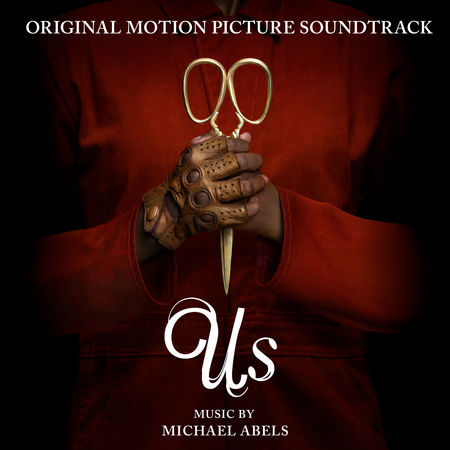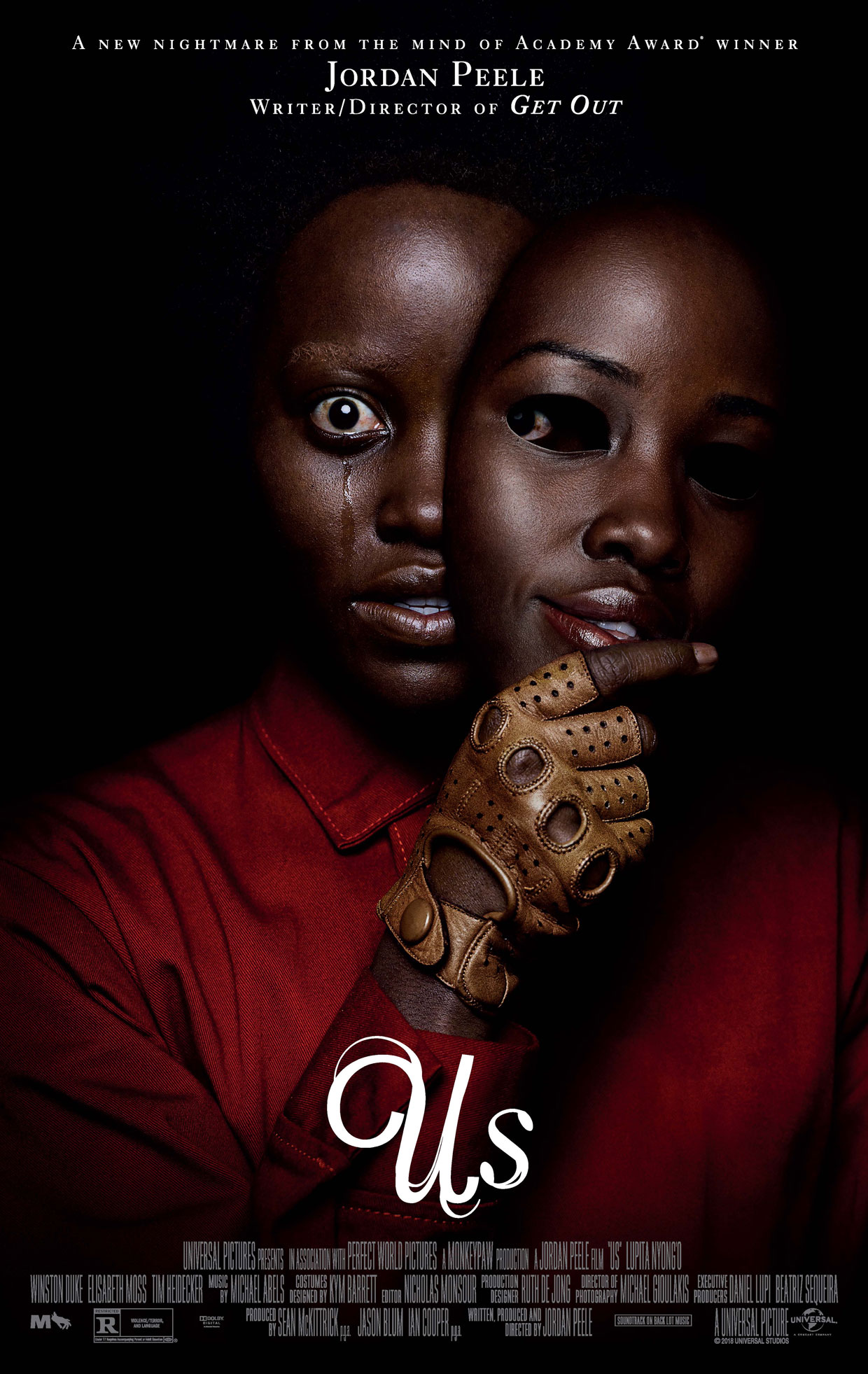March 22, 2019
About Michael Abels new score for Jordon Peele’s US
– Randall D. Larson
Michael Abels’ second scoring session with director Jordon Peele, after a successful first collaboration in 2017 for GET OUT, opened in theaters on Friday from Universal Pictures. US tells the creepy story of a family on vacation being terrorized by a group of doppelgängers. The film stars Lupita Nyong’o, Winston Duke, Elisabeth Moss,Tim Heidecker, Shahadi Wright Joseph, and Evan Alex. Back Lot Music released a digital soundtrack on March 15, which includes 31 score tracks and four songs from Janelle Monáe, Luniz, and Minnie Ripperton. The Back Lot soundtrack is available digitally to purchase or stream from these sources.
second scoring session with director Jordon Peele, after a successful first collaboration in 2017 for GET OUT, opened in theaters on Friday from Universal Pictures. US tells the creepy story of a family on vacation being terrorized by a group of doppelgängers. The film stars Lupita Nyong’o, Winston Duke, Elisabeth Moss,Tim Heidecker, Shahadi Wright Joseph, and Evan Alex. Back Lot Music released a digital soundtrack on March 15, which includes 31 score tracks and four songs from Janelle Monáe, Luniz, and Minnie Ripperton. The Back Lot soundtrack is available digitally to purchase or stream from these sources.
In an interview with Paula Parisi posted online at billboard, Abels described his use of the Hungarian cimbalom as an integral part of his score for US. The instrument, which found favor with film composers, especially for scores in fantasy films (see list), is a type of hammered dulcimer which has about 125 steel and copper strings stretched “I paired that with the violin a lot, the result of experimenting with sounds that were very dissimilar,” Abels told Parisi. The tonality became a signature sound for Umbre, the evil twin of the teenage daughter. Elsewhere, Abels used the violin to represent “the fiery spirit of Red, the terrifying doppelgänger of Lupita Nyong’o’s Adelaide,” as he described to writer Piya Sinha-Roy in a separate interview posted to Entertainment Weekly.
Abels’ score favors strings and percussion, enhanced by a 30-voice choir, one third of the singers being children. “Jordan heard children’s voices as being an important, chilling part of the score,” said Abels in the billboard article. One of Peele’s signature moves, the composer notes, is “taking something innocent and putting it in a context that makes the hair stand up on the back of the neck. We did that in number of instances, using music that by itself would be sound sweet but combined with what’s onscreen, not so much.”
 In the EW interview, Abels further described his use of choir in the score: “There are some other tracks where the singing is really out front. Jordan specifically, when we first spoke about the film, talked about how important he wanted the voices to be in the soundtrack,” he said, pointing to tracks such as “Immolation,” which has “really over-the-top singing,” and “Human,” in which vocalists sing “with size of despair that has its own unique ambience.”
In the EW interview, Abels further described his use of choir in the score: “There are some other tracks where the singing is really out front. Jordan specifically, when we first spoke about the film, talked about how important he wanted the voices to be in the soundtrack,” he said, pointing to tracks such as “Immolation,” which has “really over-the-top singing,” and “Human,” in which vocalists sing “with size of despair that has its own unique ambience.”
“There are times you want to foreshadow what’s coming and other times you want to deliberately not foreshadow what’s coming,” Abels told EW. “Some scares are the type of dread where you know it’s coming, and others aren’t. So we do spend a lot of time talking about what kind of scare something’s going to be, whether it’s a jump-at-you, or a slow burn.”
The voices echo those of children, which Abels says was done purposely, as “it can be very unsettling because of the juxtaposition of the [children’s] innocence and the kind of the angry intent you hear,” and he wanted it to sound like it came from the underground world of the Tethered.
Many of Abels’ musical motifs derive from a track called “Anthem,” in which the vocal material culminates. Listen to the track below [article continues after]:
“The voices are not [singing in] a language,” Abels concluded in the EW interview. “it’s nonsense syllables so you focus more on their feeling and the music – you can tell something’s coming and it’s not good, these people mean business but you can’t tell exactly what it is they want,” he said. “It was important that they sounded like not like any specific culture, they sounded like they were organized and evil but not foreign.”
In another track, Abels riffed off of Tchaikovsky’s “Pas Des Deux” from The Nutcracker Suite, which became the accompaniment for an epic battle. “It’s not one of The Nutcracker’s more hummable tunes, but it is a very famous dance piece,” Abels explained to Parisi. Jordan started with that idea and I had to do some steps for an edit.”
Listen to the track below:
https://www.youtube.com/watch?v=dGboni7ypv8




